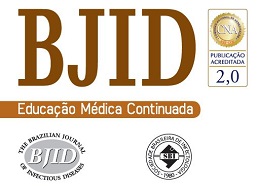Carbapenemases production, either metallo-β-lactamases (MBLs), KPC or oxacillinases (OXA), is the main resistance mechanism responsible for resistance phenotype to carbapenems in Acinetobacter.1 While for MBLs and KPCs there are some screening tests for their detection,2,3 the same is not true for oxacillinases.
During the investigation of a large outbreak, we analyzed 584 carbapenem-resistant Acinetobacter spp. isolates from seven hospitals. Isolates were identified using the API 20NE system (Biomerieux, Basingstoke, United Kingdom). PCR for the blaOXA-51 gene was performed as a marker of Acinetobacter baumannii at species level.1 The MIC for imipenem was performed by Etest® (AB BIODISK, Solna, Sweden) and was ≥8μg/mL in all isolates.
A total of 562 (96.3%) and 553 (95%) isolates proved to be OXA-51 and OXA-23 producers respectively, by a multiplex PCR, which included primers for the blaOXA-23-like, blaOXA-24-like, blaOXA-51, blaOXA-58, blaOXA-143 genes.4 Among the 553 OXA-23-like A. baumannii producing isolates, we observed 86 (15.5%) positive isolates in the screening test for MBLs either by the disk-approximation test using a ceftazidime (CAZ) and a 2-mercaptopropionic acid (MPA) or by the Etest MBL (Imipenem/Imipenem+EDTA−AB BIODISK, Solna, Sweden).2,5 The modified Hodge Test was performed in these isolates and only nine (1.5%) were positive.6 PCR using blaIMP-1-like, blaVIM-2-likeblaSPM-1, blaNDM-1, blaKPC-1,2 primers2–4,7 failed to produce any amplicon in these isolates.
Oxacillinases enzymes are formed by dimers.8 As divalent metals are needed to make the dimeric structure more stable, a chelator agent would affect the activity of such enzymes.8 Therefore, chelators, such as EDTA or MPA, may inhibit these OXA enzymes producing a result that could be interpreted as positive for the presence of MBL according to the phenotypic methods.8 This hypothesis can be supported by the fact that 98.5% of the isolates were Hodge Test negative. The opposite is observed when there is only oxacilinases production, since these enzymes hydrolyze carbapenems poorly; it results in a Hodge Test negative in most isolates.
The OXA-23 gene is the most prevalent oxacillinase among CRAb in our city. Although positive results have been obtained by phenotypic screening tests for MBL and the PCR was negative for genes tested. Thus, one must be careful when interpreting positive results in phenotypic screening tests for MBL in CRAb because false-positive results can occur.
Conflict of interestThe authors declare no conflict of interest.




